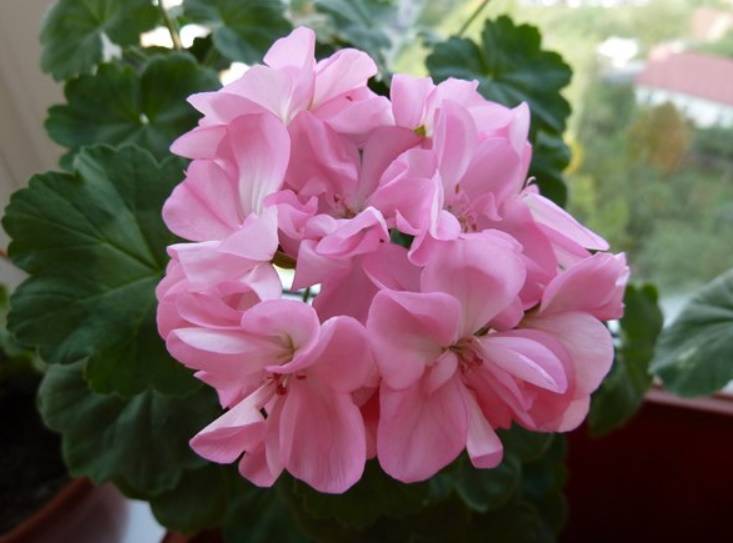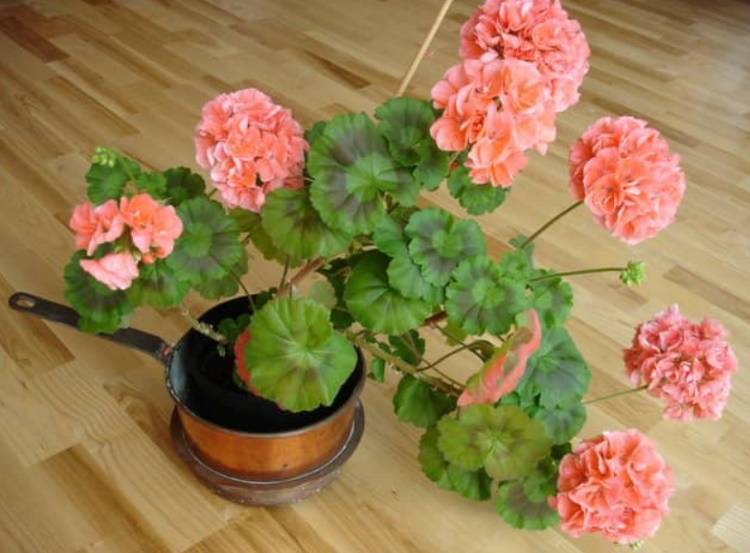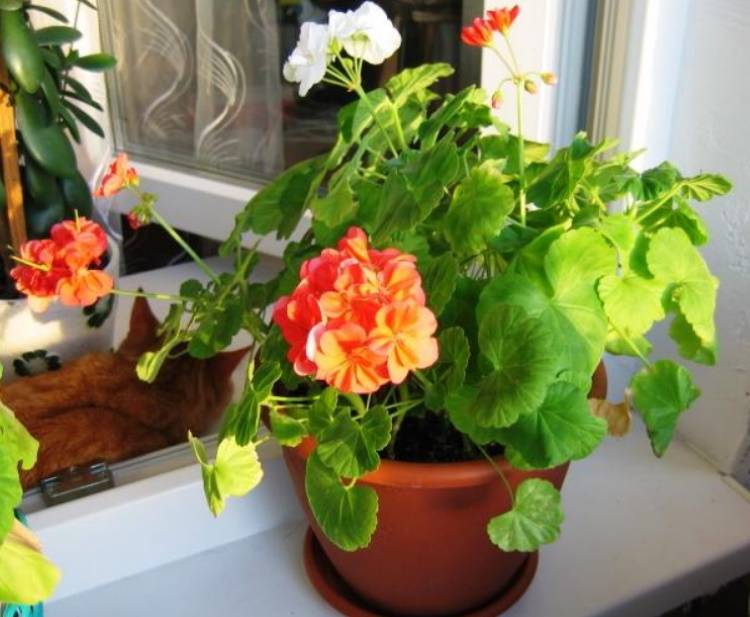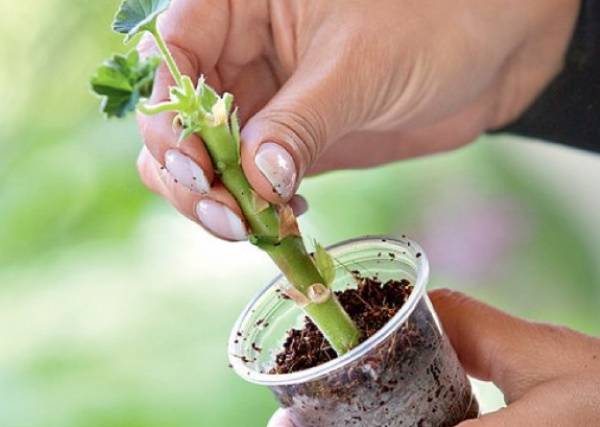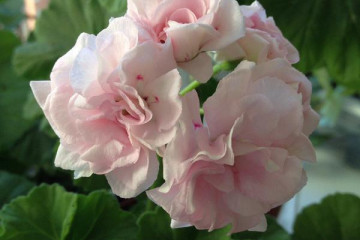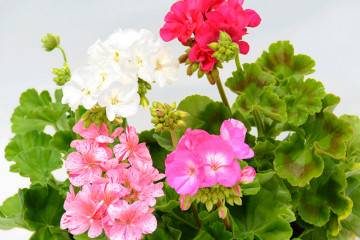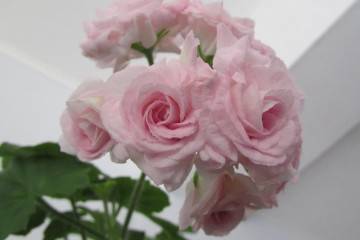Pelargonium "Denise" is a popular variety
Content:
Back in the middle of the 17th century, English and Dutch flower growers, for the first time growing wild species of geraniums from South African seeds in their gardens, realized what a huge potential lies in these flowers. Active selection work led not only to the cultivation of plants, but also to the breeding of a huge number of their new varieties. For the purpose of reliable classification, plants from the Geraniaceae family were divided into several genera. Pelargonium Denise belongs to the genus Pelargonium and has become the standard of beauty among the representatives of its species.
Pelargonium Denise, description
Lovers of geraniums often call this type of flowers "Denise geranium", forgetting that geraniums and pelargoniums are genetically completely different plants and cannot produce common offspring.
In addition to generative traits, plants differ in requirements for growing conditions: geraniums will not freeze in winter in temperate climates, plants from the Pelargonium genus need warmth and a lot of light in order to live.
Varieties
There are two breeding types of Pelargonium Denise on the Russian flower market. They were grown by specialists from different companies - the Swedish pelargonium nursery Sutarve and the Belgian Rockdale. The plants, although they belong to the same group of zonal Pelargonium, are not quite alike in flower shape.
The differences between plants are that
- hybrid Denise Sutarve forms half-open rose-like buds, from which they form a compact miniature bush, similar to a bride's bouquet, covered with emerald leaves;
- Pelargonium Denise Rockdale opens buds from fully opened petals, collected in double inflorescences, flower stamens are clearly visible in the center of the bud.
Cultivation of Denise pelargonium at home
All members of the Geranium family of the genus Pelargonium have a reputation among experienced flower growers as undemanding plants that can be grown without much difficulty. But novice florists should be aware that these plants also need some care and some conditions for normal development.
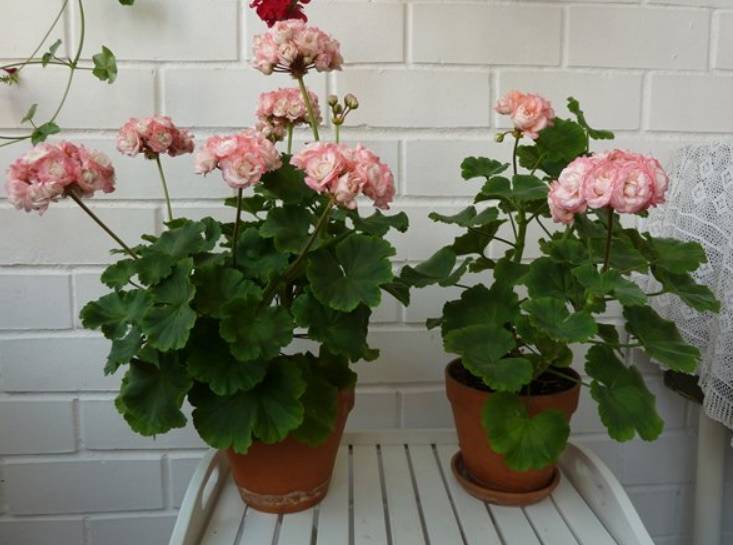
Denize Sutarve (left), similar to each other blooming in the warm season, on the opposite side - Fischers Appleblossom
Illumination and temperature conditions
During the period of active development, geraniums need an air temperature in the range of 20-27 ° C. Plants will not be affected even at 30 ° C, but only if the air humidity near the bushes is above 70%. To do this, next to the flower pots, leave open containers with water or regularly spray the bushes from a fine spray.
In order for the leaves and flowers of Pelargonium to have a rich hue, the bushes should be on the side of the building where the sun will be most of the day. It should be borne in mind that scorching rays can burn sheet plates, therefore pelargoniums are covered with protective nets that scatter ultraviolet light at noon.
During hibernation, unlike the warm months, flowers do not need a lot of sun and warmth. In this phase of development, pelargoniums can remain in a room where the air temperature does not drop below + 10-12 ° C.
Watering rules and humidity
Pelargonium bushes during the growing season, generating flower buds, and then flowering, water is needed in order to fill the cells of flower petals and leaves. But excess water can adversely affect the plant. Pelargoniums may not cope with excess moisture if frequent abundant watering is done not in the heat, when moisture evaporates from the surface of the leaves at an accelerated rate, but in cool cloudy weather.
You can determine whether a plant needs watering by the condition of the soil. The wet surface of the soil substrate is a signal that the flower does not need water yet.
Top dressing and soil quality
For transplanting geraniums at home, use a ready-made substrate with a normal level of acidity or independently prepare a mixture of sod / leafy soil, sand and high peat (ratio 2: 1: 1).
Before being placed in a flower pot, any kind of soil is disinfected and spilled with a solution of Fitosporin M to populate the soil with bacteria useful for the plant.
Fertilizing flowers are needed in the warm season - every 2 weeks; during the winter dormancy period, the plants are not fed. In the spring, on the eve of the growing season, nitrogen, phosphorus and potassium are introduced into the top dressing, then complex fertilizers are used with a full set of trace elements, but with a minimum amount of nitrogen.
Flower container size
Some growers argue that geranium plants need to fill the entire volume of the pot for planting buds and flowering. But these lovers of pelargoniums forget that in the warm season, a flower transplanted to a flower bed, where its root system grows in all directions and cannot be limited by anything, blooms much more luxuriously than in an apartment.
Therefore, we can safely say that in a spacious pot with drainage holes, with proper care, timely watering and feeding, an adult geranium will grow better than in cramped conditions.
Pruning and replanting
The condition of the pelargonium bushes is monitored throughout the warm season. If you do not plan to get seeds from the flowers, all faded peduncles are cut off after flowering. Dried leaves are removed regularly.
In the fall, before the transition to the dormant period, diseased branches are cut from the plants, the bushes are thinned, the stems are shortened. In spring, plants can be transplanted into a new pot.
If the transplant is accompanied by the division of the rhizome, small pots are chosen so that the flowers fill the flowerpot with their roots as soon as possible and begin to grow vegetative organs. Adult pelargoniums are transplanted into pots with a diameter larger than their crown. During transplantation, they try not to damage the roots of the flower, not completely showered the soil from the roots.
Features of flowering plants
Representatives of the genus Pelargonium in the climatic conditions of the central zone of Russia during the year have two phases of development that are different in duration.
Within 9 months, from March to November, the plant increases the size of its roots, builds up the green mass - stems, leaves, buds, blooms, forms fruit pods, in which the seeds ripen, and then begins to slow down all its internal processes.
In the month of December, Denis pelargonium must go into hibernation so that during this period its roots can take a break from the continuous absorption and pumping of moisture and nutrients to the stems, leaves and flowers. Therefore, it is so important at this time to change the favorable thermal regime and lighting conditions of geraniums to more severe ones.
Flower reproduction methods
Those who dare to propagate hybrid pelargoniums by seeds should remember that seedlings that are not at all similar to the mother plants can grow from them. Therefore, it is better to choose the method of plant propagation by cuttings. As cuttings, you can use the segments of the branches obtained when cutting bushes in autumn and spring. Cuttings are rooted in water and soil in individual and general containers.
Seed propagation
The process of growing pelargonium from seeds takes place in specially created conditions. For this, either general greenhouse containers and soil mixture with neutral acidity, or individual pots are prepared. Seeds are sown on compacted soil, sprinkled with a thin layer of dry sand or well-crushed soil.
It is necessary to maintain the required level of moisture in the soil surface using a spray bottle with fine spray. Abundant streams of water should not suck seeds deep into the soil.
Pelargonium cuttings
Rooting of geranium cuttings in the soil is carried out in spring, summer and autumn. Cuttings cut from plants during the beginning of the growing season - in the spring - root best of all. Summer rooting is often accompanied by rotting of the cuttings, so during this period it is important not to overmoisten the soil. Autumn rooting work should be accompanied by the creation of not only a warm microclimate, but also a long daylight hours.
Growing problems, diseases and pests
In order for pelargoniums not to turn yellow, not to shed buds and flowers, their leaves do not dry out and stems do not grow thin and stretched, it is necessary to observe the optimal light and thermal regimes for flower care, to carry out timely feeding and watering.
Waterlogged soil in the root zone of pelargonium can cause fungal diseases of plants, damage to the stems, puffiness on the seamy surface of the leaves. In moist soil, a root eater, a root bug, can start.
For the treatment and prevention of bacterial, viral and fungal infections, for the destruction of pests, flowers are treated with biological protection agents, and the conditions for plant care are changed.
Propagating and growing beautiful Pelargonium species on their own balcony or garden conservatory is the dream of most flower lovers. It's great if there is some kind of Denise hybrids among them, because these are such beautiful flowers.

